1. Louisiana

Louisiana is among the fastest-dying states in the U.S., with its population struggling against economic challenges and environmental vulnerabilities. Natural disasters, such as Hurricane Ida in 2021, caused widespread damage, leading to a 2% economic contraction and displacing thousands of residents. Climate change continues to amplify these disasters, making Louisiana increasingly prone to hurricanes, flooding, and other extreme weather events. With a reliance on the oil and gas industries, the state faces economic instability when these sectors suffer. Consequently, many residents have sought safety and economic stability in states less vulnerable to climate-related disasters, according to the Pelican Institute.
This ongoing cycle of disaster and recovery has severely impacted Louisiana’s ability to retain its population. As economic challenges compound with infrastructure shortcomings, residents are abandoning the state in search of better opportunities. The exodus has accelerated as people look for regions with more sustainable infrastructure and employment options. Unless Louisiana invests heavily in climate resilience and diversifying its economy, it risks further population loss and long-term economic stagnation.
2. Illinois

Illinois has consistently faced one of the most notable population declines in the United States. Since 2014, the state has experienced a steady outflow of residents, culminating in a 0.4% yearly population decrease through 2023, according to Fox32. The primary drivers of this trend include high property taxes, significant pension debt, and an unstable job market. Residents are also burdened by some of the highest taxes in the nation, creating financial pressure on families and businesses. Combined with budget shortfalls and economic challenges, Illinois has become less competitive in attracting and retaining talent.
This outmigration is further exacerbated by the allure of more affordable states offering lower taxes and stronger economic growth. As Illinois struggles to address its fiscal issues, businesses and residents alike are seeking better opportunities elsewhere. Although policymakers are exploring reforms to alleviate the tax burden and attract investment, progress has been slow. Until meaningful changes are implemented, Illinois is expected to remain one of the fastest-dying states in the country.
3. West Virginia
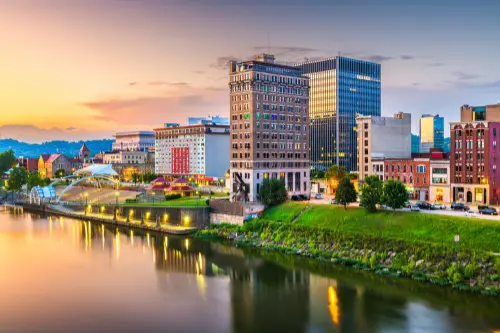
West Virginia has struggled to adapt as its coal-based economy continues to decline. The energy transition to renewables has drastically reduced demand for coal, leading to widespread job losses and economic stagnation. The state’s GDP contracted by 3.7% in 2020, signaling deeper systemic issues. Population decline has accelerated, with a 3% drop projected by 2025, as residents leave in search of economic opportunities elsewhere. Young professionals, in particular, are migrating to states with more diversified economies and better job prospects, according to the West Virginia Center on Budget & Policy.
Despite efforts to diversify its economy, West Virginia faces significant barriers, including outdated infrastructure and limited resources. The state’s reliance on traditional industries leaves it vulnerable to global market changes. Many residents view relocation as the only viable option for improving their quality of life. Without meaningful investment in education, technology, and sustainable industries, West Virginia risks an ongoing population crisis.
4. New York

New York’s high cost of living continues to drive residents away, with nearly 500,000 people leaving the state over the last three years. Housing prices, in particular, have become a significant burden, forcing families to seek more affordable alternatives. Remote work has further enabled this trend, as workers relocate to states offering better value for their money, the Financial Times explains. Florida and North Carolina have emerged as popular destinations, offering lower living costs and warmer climates.
In addition to housing, New York’s high taxes and competitive job market have contributed to the outmigration. Many residents feel squeezed by financial pressures and limited opportunities for economic mobility. If the state fails to address these systemic issues, population loss is likely to persist. Policymakers must prioritize affordability and access to resources to ensure New York remains an attractive place to live and work.
5. California

California’s ongoing population decline highlights the challenges of maintaining growth in one of the country’s most expensive states. Over 250,000 residents have left in recent years, citing sky-high housing costs, excessive taxes, and stringent regulations. Prominent figures, including Elon Musk, have drawn attention to the state’s difficulties in retaining both talent and businesses. California’s housing crisis has reached a tipping point, with prices becoming unaffordable for many middle-class families, the Los Angeles Times warns.
The economic consequences of this exodus are significant, as businesses relocate to states like Texas and Arizona in search of friendlier tax environments. Residents, too, are finding it increasingly challenging to justify the high costs of staying. Without serious reforms to reduce living expenses and ease regulations, California risks losing even more of its workforce and economic base.
6. Mississippi

Mississippi’s declining population stems from persistent economic and educational challenges. As one of the poorest states in the country, Mississippi struggles with attracting a skilled workforce. Only 22% of residents hold a bachelor’s degree, which limits opportunities for higher-paying jobs. The state’s lack of investment in education and infrastructure has further hindered its ability to retain residents.
Many Mississippians are moving to states with stronger job markets and access to higher education. Addressing the state’s systemic issues will require significant reforms in education and workforce development. Without these changes, Mississippi is likely to continue losing its population to more prosperous regions.
7. Connecticut
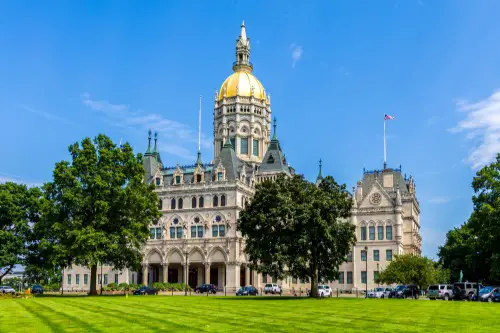
Connecticut is experiencing a steady population decline, largely due to the high cost of living and an aging population. The state’s taxes are among the highest in the nation, placing a significant financial burden on residents and businesses. Property taxes, in particular, have driven many middle-class families to seek more affordable living options in neighboring states. Additionally, Connecticut’s cost of housing—both in the cities and rural areas—is contributing to the departure of families who can no longer afford to stay. While Connecticut has historically been home to a strong workforce and vibrant industries, many residents are now looking to lower-tax states, such as Florida and Tennessee, where the cost of living is more manageable.
The state’s aging population exacerbates the problem, as fewer younger residents are moving in to replace those who are retiring or leaving. Many of Connecticut’s cities have struggled to maintain their economic vitality, and younger workers are often lured to the larger metropolitan areas outside the state, such as New York City or Boston. To retain talent and attract younger residents, Connecticut needs to focus on making the state more affordable and investing in industries that appeal to a younger, tech-savvy workforce. While the state has made strides in certain areas, such as creating incentives for technology and biotech companies, these efforts have not yet been enough to reverse the outmigration trend. Without significant changes to lower living costs, address the tax burden, and create new job opportunities, Connecticut risks losing its competitive edge.
8. Maine
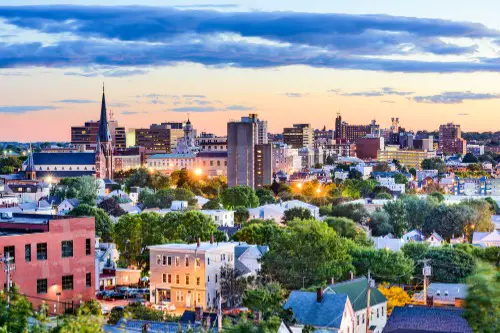
Maine’s demographic challenges are contributing to its slow population decline. The state has one of the oldest populations in the U.S., with residents aged 65 and older representing 20% of the population. This aging trend has serious implications for the state’s economy and workforce, as fewer younger people are entering the labor force. Many young professionals are leaving Maine in search of better job opportunities, urban environments, and more modern amenities. As a rural state, Maine’s lack of urbanization and limited infrastructure make it less attractive for younger families who may prioritize access to better schools, cultural activities, and job prospects.
Despite the state’s natural beauty and desirable coastal areas, Maine struggles to retain and attract a younger workforce. The state has attempted to address these issues through various incentive programs aimed at luring people back, such as tax breaks for new residents and funding for remote workers. However, these efforts have met with limited success due to the lack of substantial employment opportunities and urban amenities. Maine’s economy is still heavily reliant on traditional industries such as fishing, forestry, and tourism, but these sectors cannot fully support the state’s financial needs in an increasingly digital and service-oriented world. To combat this population loss, Maine must invest heavily in education, workforce development, and infrastructure to create a more dynamic and appealing environment for younger generations. Without this commitment, the state’s population is likely to continue declining in the years ahead.
9. Michigan

Michigan has faced a long-standing challenge of transitioning its economy away from its reliance on manufacturing, particularly the auto industry, which has experienced a sharp decline in recent years. While the state is home to a large number of automotive and manufacturing plants, the rise of automation and the shift toward green energy have led to significant job losses in these sectors. This decline has been felt most strongly in smaller, industrial towns that once thrived on manufacturing jobs, leading to a continued population decrease in these areas. While Michigan has made efforts to diversify its economy, such as by investing in technology, healthcare, and renewable energy, the transition has been slower than expected, leaving many residents frustrated.
In addition to the economic transition, Michigan has also seen outmigration due to other factors such as the state’s relatively high tax rates and the weather. The harsh winters and lack of consistent warmth in many areas have driven younger generations to more temperate states with stronger economies, like Texas and Florida. While Detroit and other urban centers have experienced revitalization in recent years, many rural and suburban areas are still struggling with limited job opportunities. For Michigan to reverse this trend, it needs to continue fostering innovation and creating high-paying, stable jobs in emerging industries. A comprehensive approach to improving education, infrastructure, and workforce training will be crucial for the state to retain its younger population and sustain economic growth.
10. Ohio
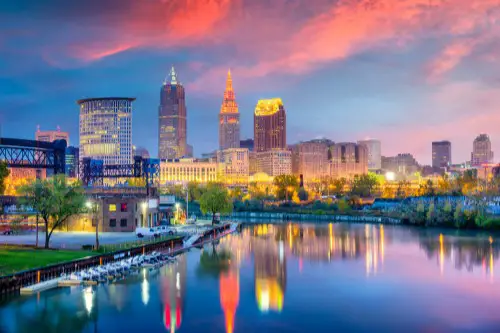
Ohio has been experiencing a slow but steady population decline in recent years. The state saw a 0.2% decrease in population in 2024, which may seem small at first, but it is significant given the state’s large size and diverse economy. One of the primary reasons for this exodus is the lack of economic growth in key sectors like manufacturing and agriculture. While Ohio has seen some revitalization in tech and healthcare, many residents are still seeking better job prospects elsewhere, particularly in more vibrant, fast-growing areas such as the Sun Belt states. The state’s relatively slow pace of economic transformation has left some areas, particularly rural regions, struggling to keep up with the demands of a rapidly evolving workforce.
In addition to economic stagnation, Ohio’s climate and limited urbanization in some areas contribute to the outmigration. The state’s harsh winters and lack of coastal access make it less attractive compared to states with warmer climates and more outdoor recreational opportunities. Younger generations, in particular, are leaving for states that offer a combination of economic opportunity, dynamic lifestyles, and better weather. As industries continue to shift away from traditional manufacturing, Ohio must diversify its economy further to reverse this trend and retain its residents, especially younger talent, who are more mobile than ever. The state needs to prioritize creating a business-friendly environment, improving public infrastructure, and investing in education and job training programs to help ensure that its population stabilizes in the coming years.
11. New Jersey
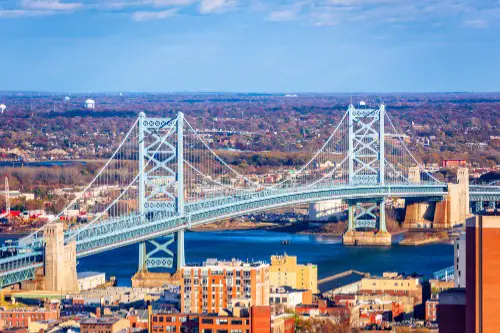
New Jersey’s population decline reflects the challenges of sustaining growth in a high-cost region. With some of the highest property taxes in the country, residents are increasingly opting for more affordable areas. Many former New Jersey residents are relocating to states like Florida and North Carolina, where the cost of living is significantly lower, and housing is far more affordable. Proximity to New York City, once an asset for the state, has now become a double-edged sword. Many people who once commuted to the city are now reconsidering whether the financial and personal sacrifices of staying in New Jersey are worth it. As remote work continues to grow, professionals are finding that they no longer need to remain tied to the northeast.
New Jersey also struggles with economic stagnation, particularly in industries that were once key contributors to its prosperity. While the state remains a hub for sectors like pharmaceuticals and finance, these industries alone are not enough to offset the high taxes and other financial burdens faced by residents. Younger families, in particular, are leaving in search of places where they can afford larger homes and save for the future. In response, New Jersey has made efforts to invest in transportation, housing, and education, but these initiatives have not yet yielded measurable results in retaining its population. Without bolder reforms to reduce costs and create more attractive opportunities for businesses and residents, the Garden State may continue to see its population dwindle in the coming years.
12. Alaska
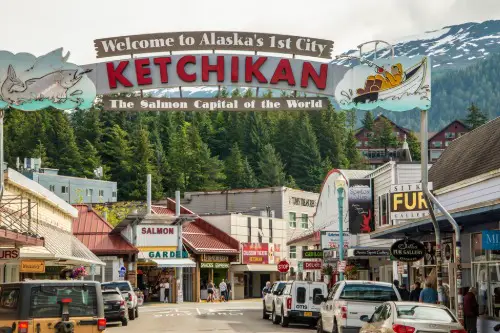
Alaska’s unique geography and harsh climate have always made it a challenging place to live, but recent trends reveal an acceleration in its population loss. The state has been hit hard by economic volatility, especially as its reliance on the oil industry continues to backfire. Declining oil prices over the past decade have led to job losses and significant budget cuts to public services, leaving the state less appealing to younger residents and families. In 2025, Alaska is expected to see one of the steepest population declines in the country as people move to warmer, more affordable regions. The state’s high cost of living compounds the problem, with housing and utility expenses being far above the national average. For many, the remote location and isolation of Alaska are simply no longer worth the trade-offs, particularly when lower 48 states offer more economic opportunity and milder conditions.
The challenges facing Alaska are not just economic but deeply tied to its geographic and environmental realities. Harsh winters, limited infrastructure, and a lack of economic diversity have left the state ill-equipped to retain its younger generations. Many Alaskans are moving to states where they can access better healthcare, education, and job markets. Meanwhile, the state’s government has tried to encourage residents to stay through programs like the Permanent Fund Dividend, which provides annual payments to residents from oil revenues. However, even these incentives have not been enough to offset the pull of other states with better quality of life and more opportunity. If Alaska does not take steps to diversify its economy and improve living conditions, it risks becoming one of the fastest-shrinking states in the U.S., despite its vast natural beauty and unique way of life.


